Abstract
The nature of the binding of adjuvant-active amphiphilic mycobacterial peptidoglycolipids and glycopeptides to mammalian plasma membranes was investigated together with their effect on the stability of artificial lipid bilayers. The importance of these interactions between mycobacterial components and membranes is discussed in relation to immunopotentiation, mitogenicity and tuberculous infection.
Full text
PDF
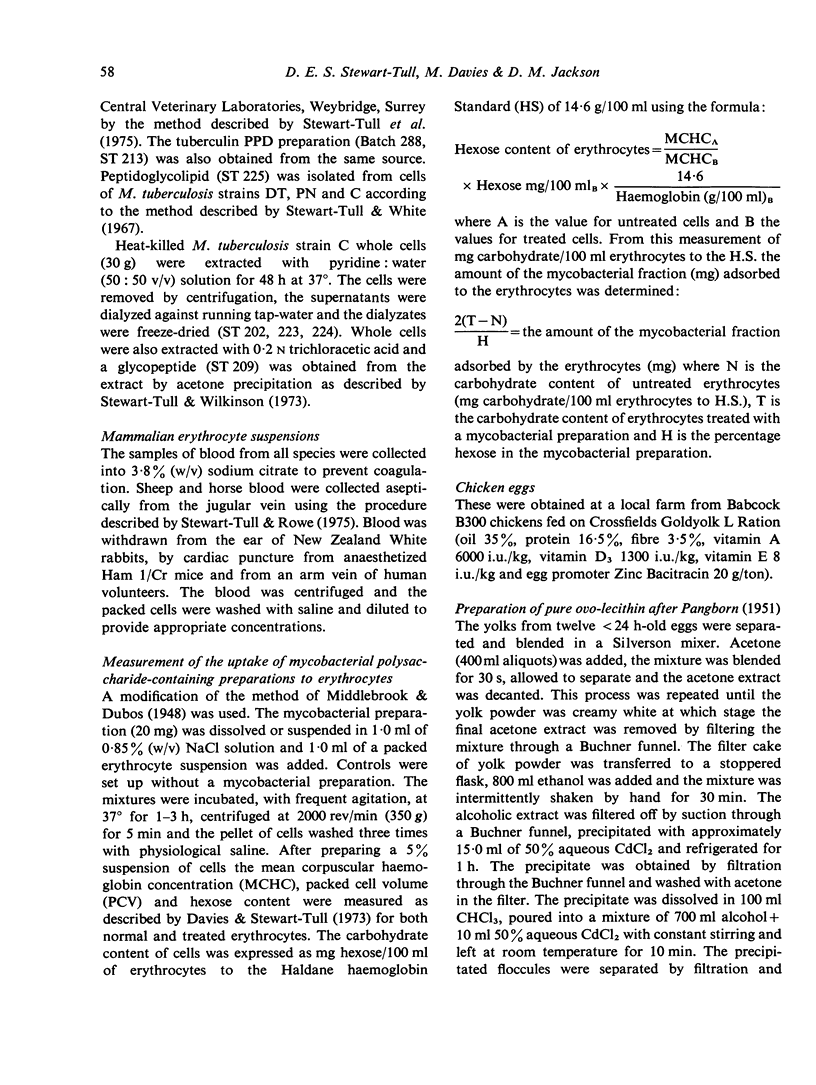
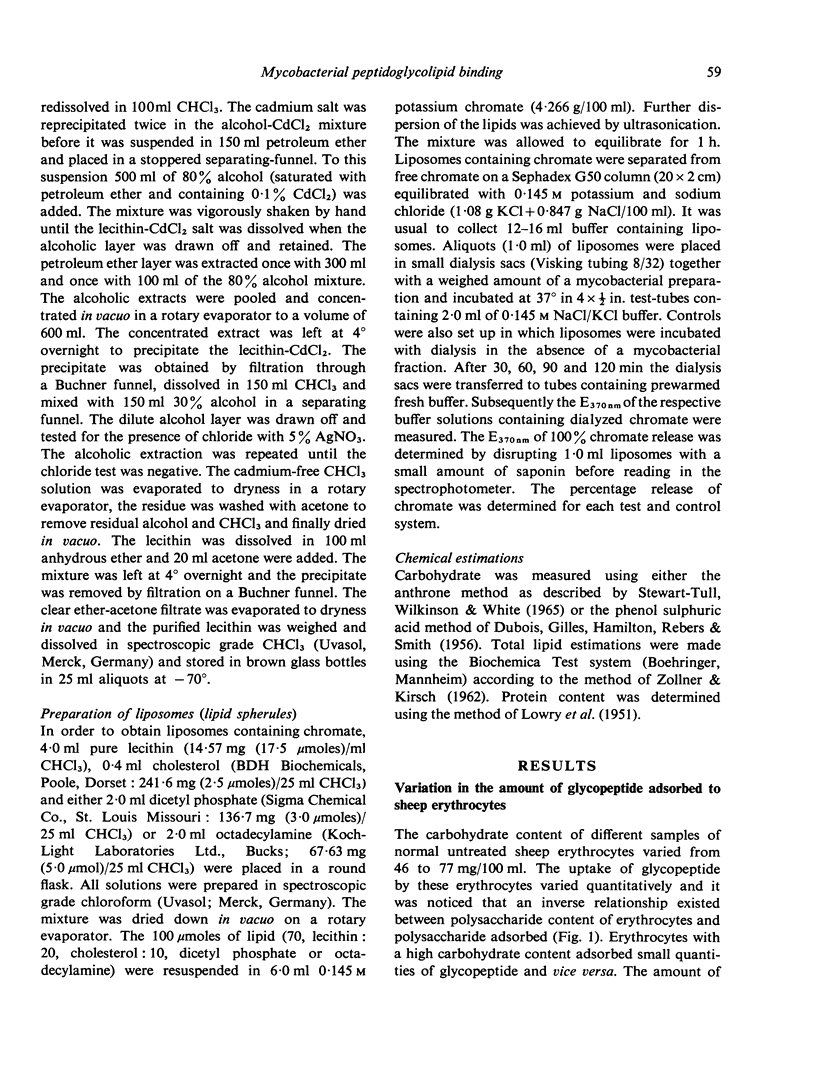
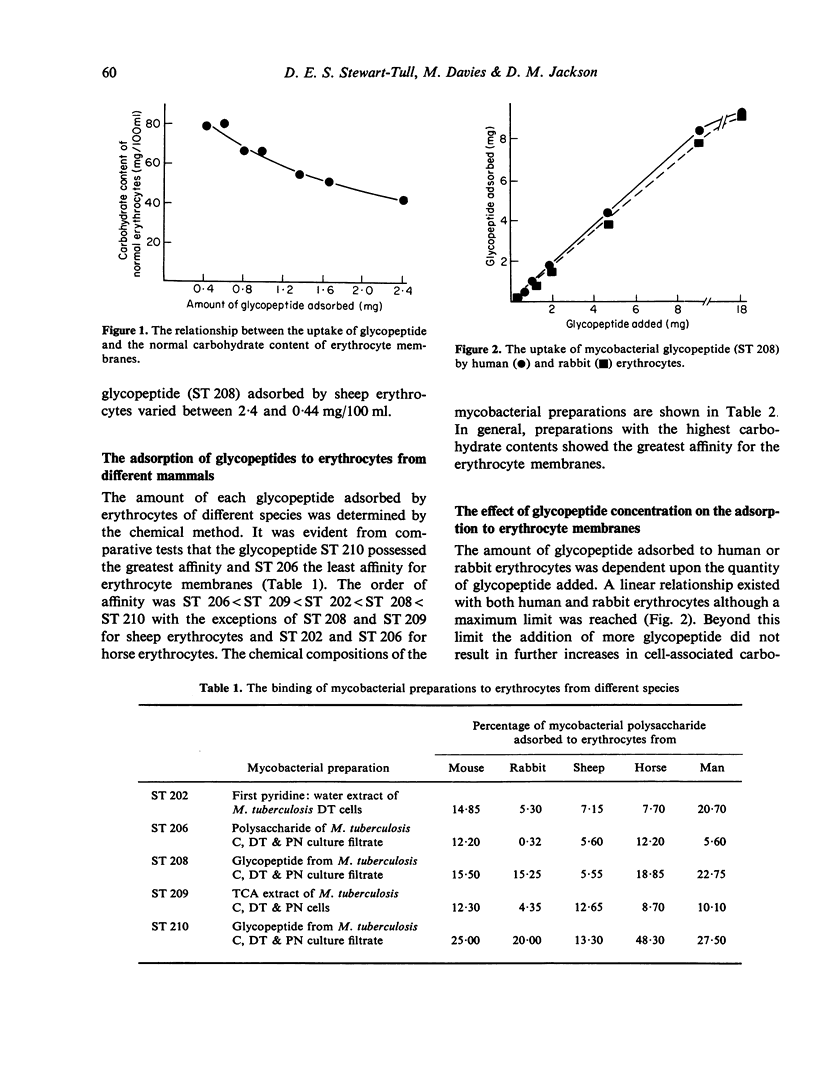
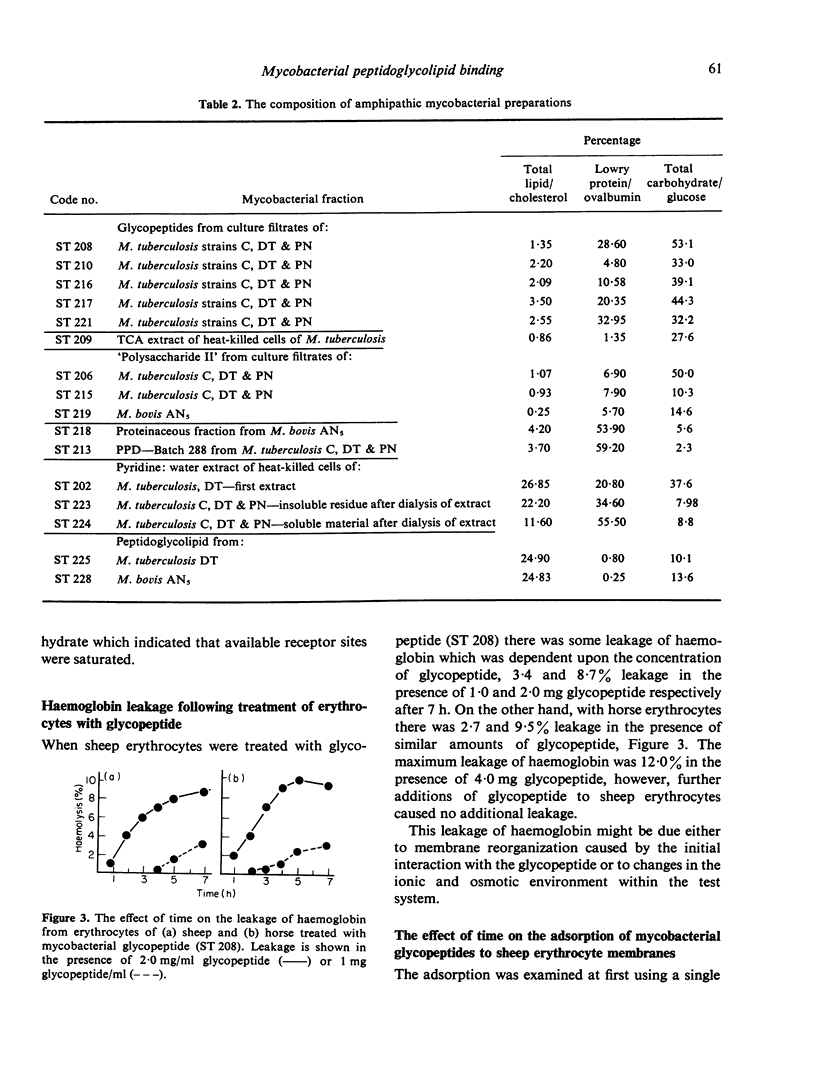
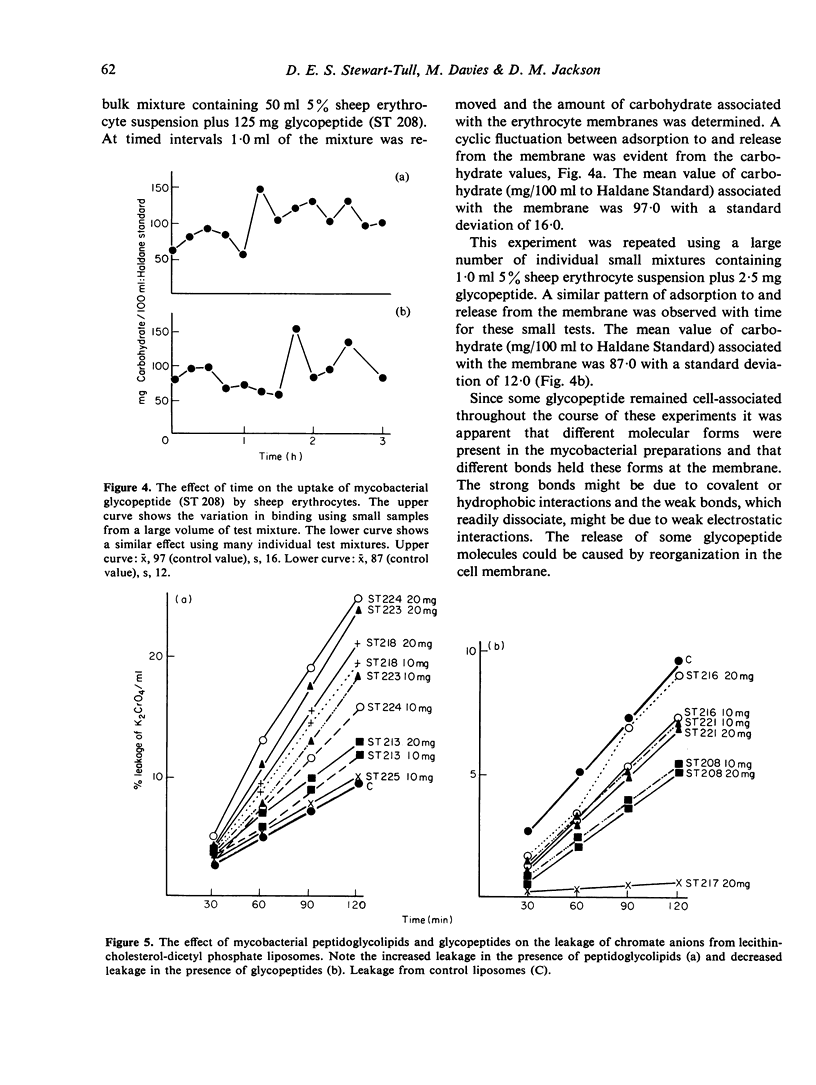
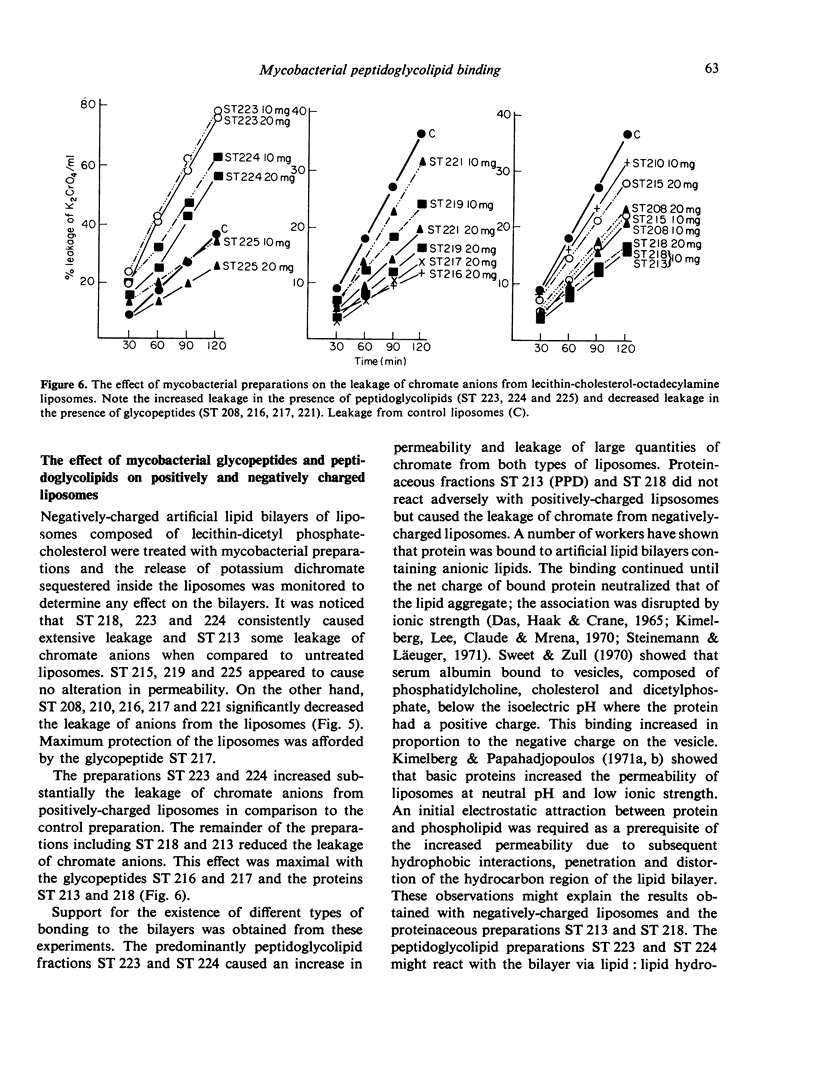

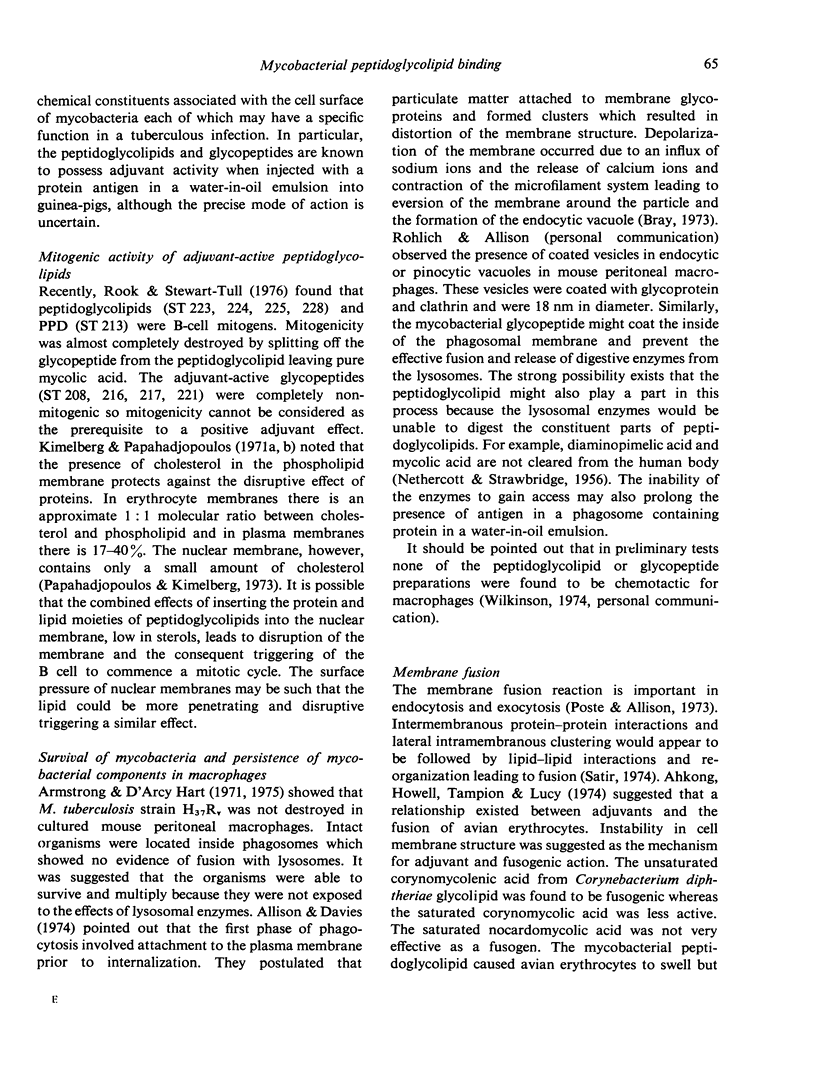
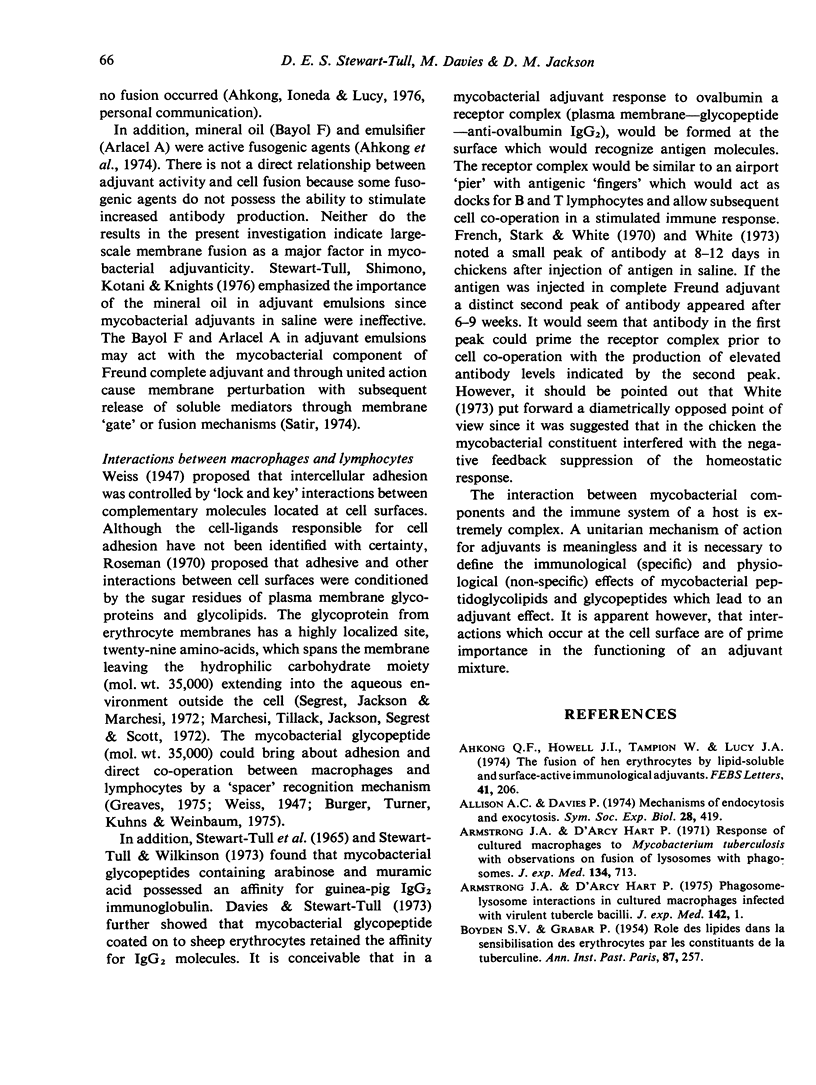
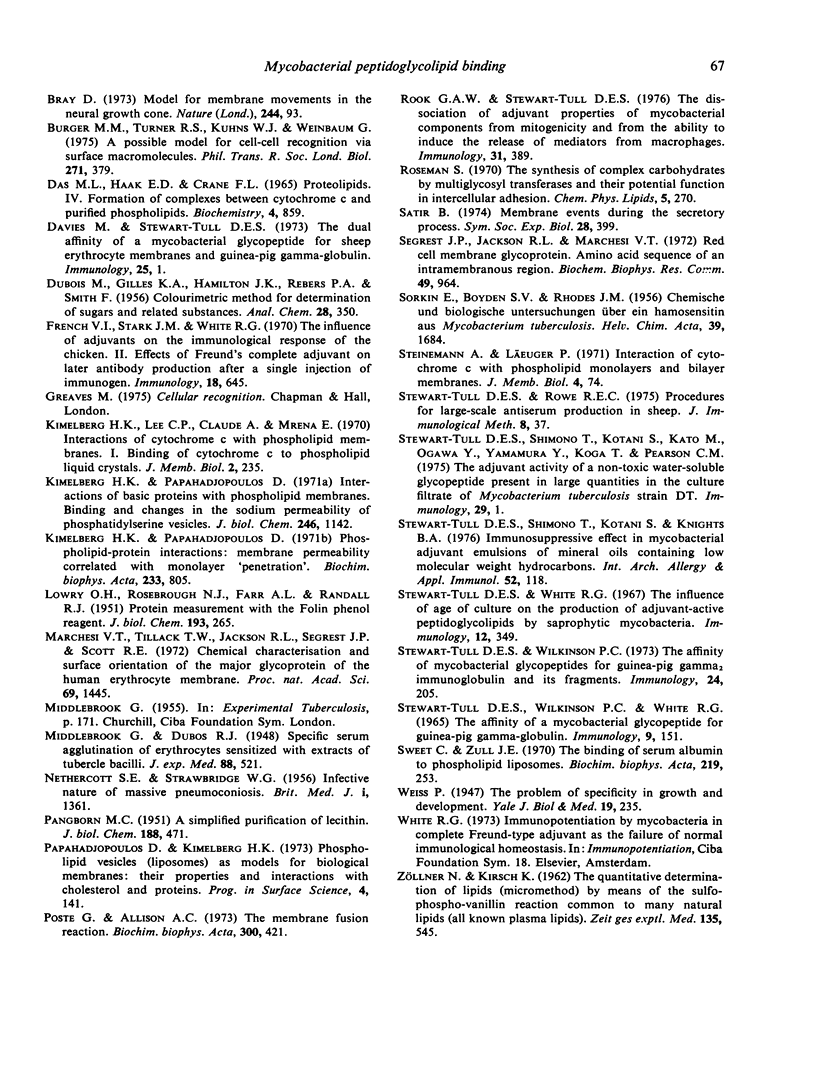
Selected References
These references are in PubMed. This may not be the complete list of references from this article.
- Ahkong Q. F., Howell J. I., Tampion W., Lucy J. A. The fusion of hen erythrocytes by lipid-soluble and surface-active immunological adjuvants. FEBS Lett. 1974 May 1;41(2):206–210. doi: 10.1016/0014-5793(74)81213-5. [DOI] [PubMed] [Google Scholar]
- Allison A. C., Davies P. Mechanisms of endocytosis and exocytosis. Symp Soc Exp Biol. 1974;(28):419–446. [PubMed] [Google Scholar]
- Armstrong J. A., Hart P. D. Response of cultured macrophages to Mycobacterium tuberculosis, with observations on fusion of lysosomes with phagosomes. J Exp Med. 1971 Sep 1;134(3 Pt 1):713–740. doi: 10.1084/jem.134.3.713. [DOI] [PMC free article] [PubMed] [Google Scholar]
- BOYDEN S. V., GRABAR P. Rôle des lipides dans la sensibilisation des érythrocytes par les constituants de la tuberculine. Ann Inst Pasteur (Paris) 1954 Sep;87(3):257–267. [PubMed] [Google Scholar]
- Burger M. M., Turner R. S., Kuhns W. J., Weinbaum G. A possible model for cell-cell recognition via surface macromolecules. Philos Trans R Soc Lond B Biol Sci. 1975 Jul 17;271(912):379–393. doi: 10.1098/rstb.1975.0059. [DOI] [PubMed] [Google Scholar]
- DAS M. L., HAAK E. D., CRANE F. L. PROTEOLIPIDS. IV. FORMATION OF COMPLEXES BETWEEN CYTOCHROME C AND PURIFIED PHOSPHOLIPIDS. Biochemistry. 1965 May;4:859–865. doi: 10.1021/bi00881a010. [DOI] [PubMed] [Google Scholar]
- French V. I., Stark J. M., White R. G. The influence of adjuvants on the immunological response of the chicken. II. Effects of Freund's complete adjuvant on later antibody production after a single injection of immunogen. Immunology. 1970 May;18(5):645–655. [PMC free article] [PubMed] [Google Scholar]
- Kimelberg H. K., Papahadjopoulos D. Interactions of basic proteins with phospholipid membranes. Binding and changes in the sodium permeability of phosphatidylserine vesicles. J Biol Chem. 1971 Feb 25;246(4):1142–1148. [PubMed] [Google Scholar]
- Kimelberg H. K., Papahadjopoulos D. Phospholipid-protein interactions: membrane permeability correlated with monolayer "penetration". Biochim Biophys Acta. 1971 Jun 1;233(3):805–809. doi: 10.1016/0005-2736(71)90181-7. [DOI] [PubMed] [Google Scholar]
- LOWRY O. H., ROSEBROUGH N. J., FARR A. L., RANDALL R. J. Protein measurement with the Folin phenol reagent. J Biol Chem. 1951 Nov;193(1):265–275. [PubMed] [Google Scholar]
- Marchesi V. T., Tillack T. W., Jackson R. L., Segrest J. P., Scott R. E. Chemical characterization and surface orientation of the major glycoprotein of the human erythrocyte membrane. Proc Natl Acad Sci U S A. 1972 Jun;69(6):1445–1449. doi: 10.1073/pnas.69.6.1445. [DOI] [PMC free article] [PubMed] [Google Scholar]
- PANGBORN M. C. A simplified purification of lecithin. J Biol Chem. 1951 Feb;188(2):471–476. [PubMed] [Google Scholar]
- Poste G., Allison A. C. Membrane fusion. Biochim Biophys Acta. 1973 Dec 28;300(4):421–465. doi: 10.1016/0304-4157(73)90015-4. [DOI] [PubMed] [Google Scholar]
- Rook G. A., Stewart-Tull D. E. The dissociation of adjuvant properties of mycobacterial components from mitogenicity, and from the ability to induce the release of mediators from macrophages. Immunology. 1976 Sep;31(3):389–396. [PMC free article] [PubMed] [Google Scholar]
- Roseman S. The synthesis of complex carbohydrates by multiglycosyltransferase systems and their potential function in intercellular adhesion. Chem Phys Lipids. 1970 Oct;5(1):270–297. doi: 10.1016/0009-3084(70)90024-1. [DOI] [PubMed] [Google Scholar]
- Satir B. Membrane events during the secretory process. Symp Soc Exp Biol. 1974;(28):399–418. [PubMed] [Google Scholar]
- Segrest J. P., Jackson R. L., Marchesi V. T., Guyer R. B., Terry W. Red cell membrane glycoprotein: amino acid sequence of an intramembranous region. Biochem Biophys Res Commun. 1972 Nov 15;49(4):964–969. doi: 10.1016/0006-291x(72)90306-3. [DOI] [PubMed] [Google Scholar]
- Stewart-Tull D. E., Rowe R. E. Procedures for large-scale antiserum production in sheep. J Immunol Methods. 1975;8(1-2):37–45. doi: 10.1016/0022-1759(75)90079-4. [DOI] [PubMed] [Google Scholar]
- Stewart-Tull D. E., White R. G. The influence of age of culture on the production of adjuvant-active peptidoglycolipids by saprophytic mycobacteria. Immunology. 1967 Mar;12(3):349–359. [PMC free article] [PubMed] [Google Scholar]
- Stewart-Tull D. E., Wilkinson P. C. The affinity of mycobacterial glycopetides for guinea-pig gamma immunoglobulin and its fragments. Immunology. 1973 Aug;25(2):205–216. [PMC free article] [PubMed] [Google Scholar]
- Stewart-Tull D. E., Wilkinson P. C., White R. G. The affinity of a mycobacterial glycopeptide for guinea-pig gamma-globulin. Immunology. 1965 Aug;9(2):151–160. [PMC free article] [PubMed] [Google Scholar]
- Stuewart-Tull D. E., Shimono T., Kotani S., Knights B. A. Immunosuppressive effect in mycobacterial adjuvant emulsions of mineral oils containing low molecular weight hydrocarbons. Int Arch Allergy Appl Immunol. 1976;52(1-4):118–128. doi: 10.1159/000231673. [DOI] [PubMed] [Google Scholar]
- Sweet C., Zull J. E. The binding of serum albumin to phospholipid liposomes. Biochim Biophys Acta. 1970 Dec 1;219(2):253–262. doi: 10.1016/0005-2736(70)90204-x. [DOI] [PubMed] [Google Scholar]


